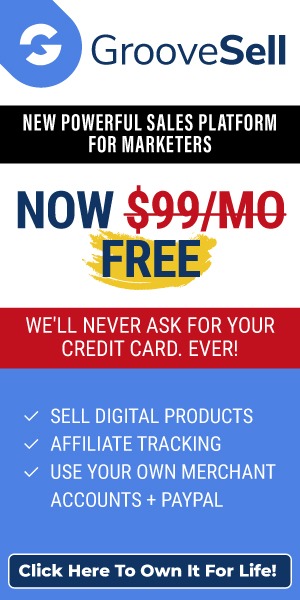
Many businesses are exploring paid models for their content, such as offering fee-based newsletters or eBooks.
However, there are pros and cons to these approaches.
Some organizations choose to offer both free and paid versions of their newsletters, with the free version containing basic content to entice readers to upgrade.
But is it worth the effort?
eBooks also present an opportunity for businesses to generate revenue.
However, there is a question of whether they sell well, considering that people generally prefer reading printed copies over electronic text.
To gain insights into what people are willing to pay for and whether fee-based content is suitable for your organization, we will hear from experts in the field.
Too Much Information
The abundance of free newsletters and information available raises the question of why readers should pay for premium newsletters.
Reading online can strain the eyes due to the emitted light from monitors, leading many to print out the newsletters instead.
Jenna Glatzer, editor-in-chief of AbsoluteWrite.com, believes that paid newsletters need to offer something unique and superior to the free alternatives.
While she personally wouldn’t pay for purely entertaining newsletters, she does subscribe to fee-based newsletters that cater specifically to her work and expertise.
According to Glatzer, a paid newsletter that simply includes the same articles found in free newsletters won’t succeed.
To stand out, you must identify an untapped niche and become the most reliable source of information in that area.
Joan Stewart, publisher of The Publicity Hound, started her subscription newsletter years ago when internet information was not as readily available.
Stewart emphasizes the importance of providing valuable content that cannot be easily found elsewhere.
Additionally, the content should be well-written, easily digestible, and guide readers towards even more information.
Stewart admits that transitioning from a print newsletter to a PDF document delivered via email was more cost-effective, but her free ezine still outperforms the subscription newsletter financially.
Charging for eBooks
When it comes to eBooks, the absence of printing and paper costs for publishers raises questions about their pricing.
Despite this, many eBooks are priced comparably to paperbacks, sometimes even higher.
Christopher Knight, publisher of Ezine-Tips, argues that the perceived value of an eBook is not solely based on printing costs.
In fact, some people may value eBooks more highly due to their convenience and portability.
Glatzer adds that regardless of the format, writing an eBook requires the same amount of effort for the author.
However, pricing an eBook too low may not be worthwhile for the writer in terms of time and promotion.
While research suggests that people still prefer paper over eBooks, there are reasons to pursue eBooks and fee-based newsletters.
Glatzer shares her own experience, highlighting the immediate access to information that eBooks provide.
Customers who desire instant information are often willing to pay higher prices. Additionally, ebooks with live links can direct readers to relevant web content.
In conclusion, businesses must carefully consider the value they offer through fee-based newsletters and ebooks.
While there is competition from free alternatives and a preference for print, unique and valuable content, along with convenience and immediacy, can justify the cost for customers.
E-Format versus Print Format
In my experience, I have authored multiple eBooks and print books, which have been a major source of income for me.
However, before I had any books to sell, I started with a thriving newsletter. Despite its success, I struggled to cover advertising costs and hosting fees.
Many of my readers reached out asking for advice on making a living as a freelance writer, prompting me to write an eBook on the subject.
While the eBook sold well, my ultimate goal was to have it published in print.
When a publisher made an offer, I took the eBook off the market and expanded it for the print version. This decision proved fruitful, as the print book outsold the eBook.
I also wrote a specialized niche book for greeting card writers and artists.
Due to its specific focus and the need for frequent updates, I decided not to pursue traditional publishers for this book.
I initially released it as a print-on-demand book but eventually transitioned it to an eBook format to ensure timely updates.
Since then, I have primarily focused on conventional publishing, with only a few promotional eBooks given away for publicity purposes.
However, I believe there is a decent market for eBooks, especially when targeting a specific audience with specialized topics.
According to Glatzer’s experience, having a free newsletter already provides you with an audience.
However, trying to sell a book on home makeovers to an audience subscribed to a pets newsletter would not be effective.
Timely Matters
One advantage of eBooks over print books is their ability to stay up-to-date and easily modified.
If there are any changes or updates, it’s quick and convenient to revise the eBook and make the new version available for sale.
On the other hand, the publishing process for print books can be time-consuming.
The relevance of content can be influenced by time, depending on the subject matter.
Some industries, like sports and history, experience minimal changes over long periods, while others, such as technology, evolve rapidly.
In the case of software-related books, by the time an author writes and a publisher prints the book, a new version of the software might already be available, making the book outdated.
However, many users do not upgrade to every version, so tips and steps from earlier versions can still be useful for newer ones.
Knight suggests selling books in both print and ebook formats to cover all bases and reach a wider audience.
eContent=Lower Quality?
There is a perception that eBooks are of lower quality and lack prestige compared to print books.
M.J. Rose, a Wired columnist and author of both print and electronic books, has encountered people who question her status as a “real author” due to her eBook publications.
Personally, I have collected numerous eBooks, but have only read a small fraction of them.
However, when you purchase an eBook, the investment may motivate you to actually read it.
Nonetheless, I also have shelves filled with printed books that I haven’t read yet.
The tangible nature of printed books allows for easier scanning of pages compared to scrolling through electronic books.
In terms of fee-based newsletters, many organizations offer a free newsletter as a way to entice readers to subscribe to their fee-based newsletter.
Like Glatzer explains, the free newsletter helps establish credibility with the audience, increasing the likelihood that they will be interested in other offerings.
Glatzer herself publishes both free and premium editions of Absolute Write and Absolute Markets newsletters.
The free edition covers a small sample of markets related to magazines, while the premium edition provides a more extensive list of job opportunities, including international markets.
Additionally, the premium edition features interviews with magazine editors and in-depth analyses of high-profile magazines on a monthly basis.
Glatzer also includes exclusive calls for writers from editors who have a connection with her, ensuring that these opportunities cannot be found elsewhere online.
Glatzer saw a gap in the market and decided to create the Absolute Markets Premium Edition, a fee-based newsletter that offers 50 pages of markets.
She believed that the $15 annual subscription fee was worth it for writers because it could potentially lead to landing assignments and save them time searching for job listings.
To determine the appropriate pricing, Glatzer and her colleagues researched similar newsletters in other fields, such as casting calls for actors.
Stewart, on the other hand, considered her own willingness to pay when determining the price for her fee-based newsletter, The Publicity Hound.
It costs $9 per issue or $49.95 for a one-year subscription and has more single-copy buyers than subscribers.
Selling eBooks and Fee Based Newsletters
When selling eBooks and newsletters for a fee, Glatzer suggests obtaining reviews and interviews for eBooks.
For newsletters, she emphasizes the importance of establishing credibility by offering free samples and providing multiple payment options for easy subscription.
Stewart promotes articles from the fee-based newsletter in almost every issue of the free ezine and uses auto responder messages to encourage single-copy buyers to subscribe.
She shares a list of what works and what doesn’t work when selling eBooks and fee-based newsletters.
What works:
– The product should be content-rich and include links to other resources.
– It should cover topics that readers find interesting, even if it includes hotlinks to other products.
– The product must be of top-quality, free of typos, and easy to read (eBooks should have 16-point type).
What doesn’t work:
– Outdated information. Special reports and eBooks should be updated annually to maintain relevance.
– Products that are essentially sales pitches for other services offered by the author.
– Products that fail to deliver on their promises.
– Poor customer service. Buyers expect prompt and helpful responses to their inquiries.
It is advised to refrain from joining discussion groups solely for the purpose of spamming them with promotions for eBooks or newsletters, as it can be irritating to people.
Glatzer promotes her fee-based newsletter through advertising in other writing-related ezines, paid Google ads, her own free newsletters, and by sponsoring writing contests and conferences in exchange for mentions in her newsletter.
She emphasizes the importance of extensive promotion to showcase the value of the newsletters to potential subscribers.
Despite the preference for print over electronic versions, fee-based newsletters and eBooks continue to thrive.
Authors consistently produce eBooks, and the prices often match or exceed those of printed books.
Knight concludes the discussion by stating that the best will always rise to the top through innovation, while those who fail to adapt will be left behind in the digital world.









